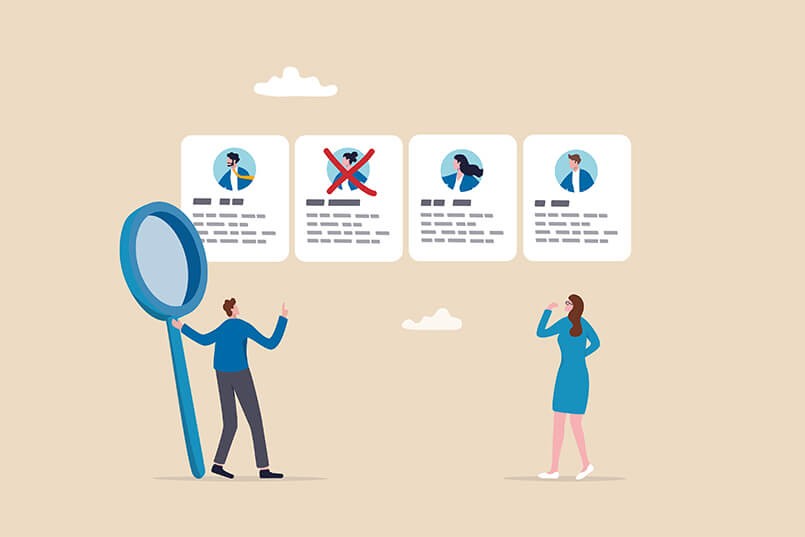In a perfect world, marketing strategy, once set, would remain constant while marketing tactics change to meet market, commercial, technical and competitive developments.
In the real world, marketing strategies evolve along with tactics in response to all sorts of changes – commercial objectives, product development, technical advances, competitive activity, consumer behaviour – or simply the arrival of a new marketing team.
And – as Chandler tells us – “Structure follows strategy”.
This means that many marketing leaders are finding themselves needing to redesign their marketing function to align and support a changed strategic direction. This is not as simple as you might think.
Here are some of the common challenges we have identified when working with marketers who are faced with this task.
Centralised vs decentralised structures
There was a time when marketing structures, in the context of organisational structures, were either centralised, decentralised or a hybrid somewhere between the two. The most common hybrid was a ‘spoke and wheel’ model, with some marketing functions centralised and others decentralised across the business. Even today, we are often engaged to help refine these gross generalisations of marketing structure, usually recommended by a consulting firm with little direct expertise in marketing.
The fact is, while these structural concepts are relevant for overall organisational design, none of them considers or addresses the complexity of day-to-day demands. Developing marketing structures today means you must accommodate the multi-faceted and, therefore, diverse capabilities required to deliver the marketing strategy effectively. While there continue to be a number of industry-standard structures, our experience has shown that you can no longer take a cookie-cutter approach to marketing organisational design.
‘Deck chairs on the Titanic’ syndrome
One of the difficulties of redesigning an existing marketing structure is permitting yourself to start with a blank sheet of paper. Too often, we have worked with a marketing leader who has limited the options by trying to modify an existing structure rather than taking the opportunity to redesign from scratch. Starting with objectives and strategic requirements is a better approach than simply cutting and pasting the current structure, as this allows you to explore and consider new ways.
One of the concerns regularly expressed is that the final design may not align with the people currently in the marketing team. While we are always supporters of maintaining current marketing resources where appropriate, the best solution is to analyse the current and proposed models alongside each other. Then, you can identify where resources transfer directly and where upskilling is needed within the new structure.
The limitations of organisational charts
One of the issues that complicate this whole design process is the application of the traditional ‘org chart’ as the representation of the structure. While this kind of chart is particularly good at defining hierarchy and functional teams, it often struggles to demonstrate how these teams work together cross-functionally, both within marketing and across the organisation.
A more effective approach is to define the functional teams and their capabilities and then design and map the process flow through the organisation into marketing and out to any external suppliers. This provides an opportunity to design based on the strategic needs and the ways of working across a number of models and options. Once a preferred model is chosen, you can populate the organisational charts to demonstrate resourcing and capabilities within teams and any hierarchy and reporting – although, in most designs, organisations are increasingly flat.
Allowing the tech to lead the structure
Once the decision has been made to implement a significant new marketing technology platform, the challenge is how best to restructure the marketing team to align with this structure. The problem with this approach is that it assumes that the tech platform is aligned with the structure and, therefore, is the strategic solution rather than simply the enabler of the strategic solution.
This means that technology, rather than a marketing strategy, is defining marketing capabilities and processes. Instead of selecting a marketing tech solution based on functionality, it is best to develop the strategic requirements and choose the tech solution based on the one that enables the marketing process.
Internal and external interfaces
Marketing is not an island within most organisations. The full scope of marketing is often managed by teams inside and outside the marketing structure. When designing marketing structures, you need to be aware of all the marketing-related functions that may interface and interact with the core marketing team.
To add complication, external partners increasingly run these other marketing functions. This includes everyone from the marketing supply chain to the various and increasing number of third-party tech platforms, media partners and brand collaborators. Only by designing inside a complete picture of the current marketing landscape are you able to develop a structure aligned not only to strategy but also to the extensive marketing ecosystem within which it will operate.
Getting started
Experience has repeatedly demonstrated that there is no ‘right’ marketing model and no one best practice structural design. What does exist is a tried-and-tested process that will allow you to design a best-fit marketing model and garner input and advice from the key stakeholders involved. This is essential in the successful implementation of any marketing redesign.
It can also help get external input on alternative approaches and models that have worked in various categories. This might challenge you to explore the possibilities before you arrive at the best-fit solution for you and the organisation.
Changes in marketing strategy require new, more effective structures for delivering that strategy. Find out how our marketing transformation process optimises your internal marketing structures and processes.


